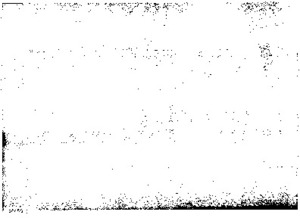| dc.creator | Naftanel, Mark Andrew | |
| dc.date.accessioned | 2013-02-22T20:39:49Z | |
| dc.date.available | 2013-02-22T20:39:49Z | |
| dc.date.created | 2001 | |
| dc.date.issued | 2013-02-22 | |
| dc.identifier.uri | https://hdl.handle.net/1969.1/ETD-TAMU-2001-Fellows-Thesis-N32 | |
| dc.description | Due to the character of the original source materials and the nature of batch digitization, quality control issues may be present in this document. Please report any quality issues you encounter to digital@library.tamu.edu, referencing the URI of the item. | en |
| dc.description | Includes bibliographical references (leaves 21-22). | en |
| dc.description.abstract | Vascular endothelial growth factor (VEGF) elicits nitric oxide (NO)-dependent vasodilation and plays major roles in angiogenesis and wound healing. Although bacterial endotoxin (LPS) has been shown to alter endothelial NO synthase (ecNOS)/NO regulation, interactive effects of LPS and NO-dependent responses to VEGF have not been examined. We compared microvascular endothelium-dependent relaxation (EDR) to VEGF¹⁶⁵ (10⁻¹⁴- 3x10⁻¹¹M) in mesenteric microvessels (~150 [æ]m) isolated from control (sterile saline-treated) and endotoxemic (E. coli LPS; 4 mg/kg i.p., 16 hrs) guinea pigs. Specialized microvessel myographs and isometric techniques were used to study EDR to VEGF following pre-contraction of vessels with endothelin-1 (~EC₅₀). Microvessels isolated from control animals, but not LPS-treated animals, exhibited significant concentration-dependent EDR to VEGF; vasorelaxation (% endothelin precontraction) at 3x10⁻¹¹ M VEGF averaged 63±17% and 8.1±9.9%, respectively. Furthermore, exposure to the NO synthase inhibitor L-NMMA (100[æ]M) significantly blocked vasorelaxation to VEGF (<3x10⁻¹¹ M) of control microvessels, but produced no effect on microvessels from LPS-treated animals; relaxation at 10⁻¹¹ M VEGF averaged 4.4±18% and -11±11%, respectively. Thus, these data indicate that in vivo endotoxemia impairs NO-dependent in vitro microvascular relaxation to VEGF. Since NO plays a major role in VEGF-stimulated vasodilation, permeability, proliferation, and angiogenesis, these data may implicate LPS-induced impairment of VEGF-stimulated NO production in the endothelial pathophysiology of shock/sepsis. | en |
| dc.format.medium | electronic | en |
| dc.format.mimetype | application/pdf | |
| dc.language.iso | en_US | |
| dc.publisher | Texas A&M University | |
| dc.rights | This thesis was part of a retrospective digitization project authorized by the Texas A&M University Libraries in 2008. Copyright remains vested with the author(s). It is the user's responsibility to secure permission from the copyright holder(s) for re-use of the work beyond the provision of Fair Use. | en |
| dc.subject | biomedical science. | en |
| dc.subject | Major biomedical science. | en |
| dc.title | Pathophysiology of endotoxin: microvascular dysfunction, and the roles of VEGF and nitric oxide (NO) | en |
| thesis.degree.department | biomedical science | en |
| thesis.degree.discipline | biomedical science | en |
| thesis.degree.name | Fellows Thesis | en |
| thesis.degree.level | Undergraduate | en |
| dc.type.genre | thesis | en |
| dc.type.material | text | en |
| dc.format.digitalOrigin | reformatted digital | en |


